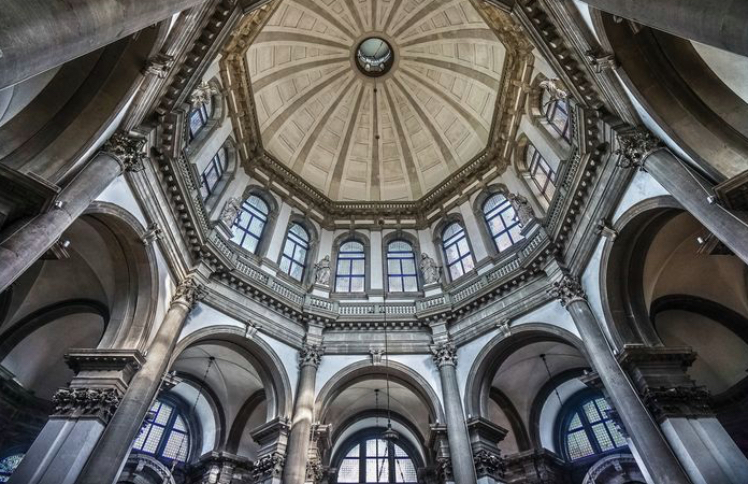
The Basilica della Salute in Venice is one of the most beautiful in the city and one of the most majestic buildings overlooking the Grand Canal.
This church bears witness to the Venetians’ devotion and gratitude to the Virgin Mary for having freed the city from the terrible plague of 1630, and even today, despite many centuries having passed, every year Venice stops to pay homage to the Madonna.
If you happen to visit Venice on 21 November, you will find yourself at the centre of the celebrations for the Madonna della Salute and you will be able to perform, together with the citizens of Venice, the rite of pilgrimage to the Basilica della Salute, across a temporary votive bridge set up for the occasion and joining the two opposite banks of the Grand Canal.
Here is what you need to know about this church!
Basilica of Santa Maria della Salute
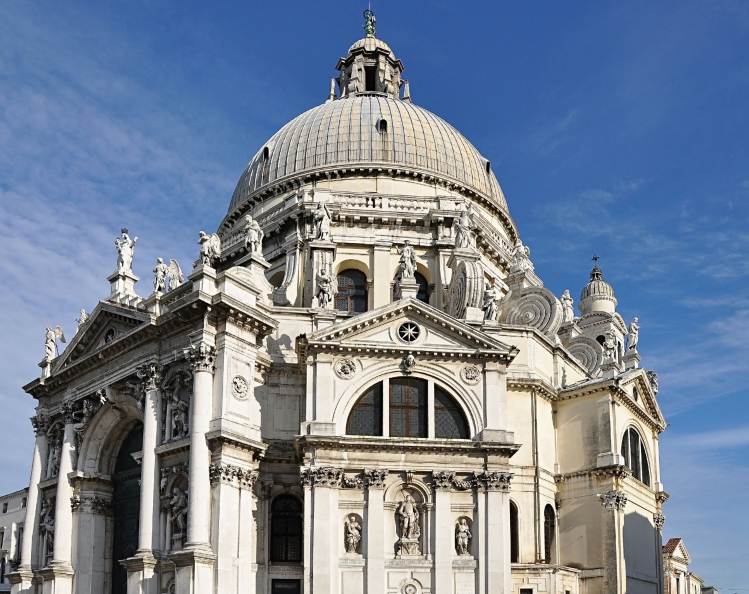
WHY THE BASILICA OF HEALTH WAS BUILT
Venice has been hit many times by an epidemic and each time, during the most tragic events, the city asked for divine help, which, once granted, it celebrated by building a church and promising to give thanks in future centuries for saving the Venetians.
It happened in 1575, when the Church of the Redeemer was built to ask for an end to the plague contagion. It happened again in the 17th century, when the situation became truly tragic. At that time, in fact, the lazarettos, the special places where plague victims were treated, were no longer able to accommodate those who had contracted the plague and it seemed that no one could avoid the disease.
This was the famous plague epidemic also narrated by Alessandro Manzoni in ‘Promessi Sposi’ (The Betrothed), which decimated the Italian population and was particularly violent in the regions of northern Italy.
Venice then decided to erect a church to dedicate to Mary, which took the name Basilica di Santa Maria della Salute. It was decided to make a vow and, during a solemn celebration, the citizens of Venice decided to pay homage to the Virgin Mary every year on the day the plague epidemic was officially over.
The prayers of the Venetians were heard, the plague ended and Venice did not forget its promise.
WHEN THE BASILICA OF HEALTH WAS BUILT
To show gratitude for the grace received, a church was built where the Holy Trinity religious complex once stood.
A competition was held for the creation of this building, which was won by the young architect Baldassarre Longhena. He was only 26 years old and dedicated his entire life to this project, dying five years before seeing the work completed.
The foundations were laid in 1631 and the consecration of the church took place in 1687.
STRUCTURE OF THE BASILICA OF HEALTH
The Basilica di Santa Maria della Salute is one of the most beautiful works of Venetian and Italian Baroque. The other Venetian church that is a symbol of Baroque is the Church of Santa Maria del Giglio, which is located on the opposite side of the Grand Canal to the Basilica della Salute.
The structure of the Basilica of Santa Maria della Salute is reminiscent of the Rosary Crown.
In fact, if you look closely at the top you will see a crown that sits on top of fifteen steps, corresponding to the Mysteries of the Rosary.
The plan is octagonal and is covered by a central dome, which makes the interior space spacious and bright.
Above the dome towers the statue of the Immaculate Madonna holding a ‘sea captain’s staff’, as if she were a general of the Venetian Republic’s fleet, but the most surprising thing is that from every point you look at it, the Church seems to have different perspectives.
The main entrance is imposing, while the rest of the structure is a triumph of decorations, statues and cornices.
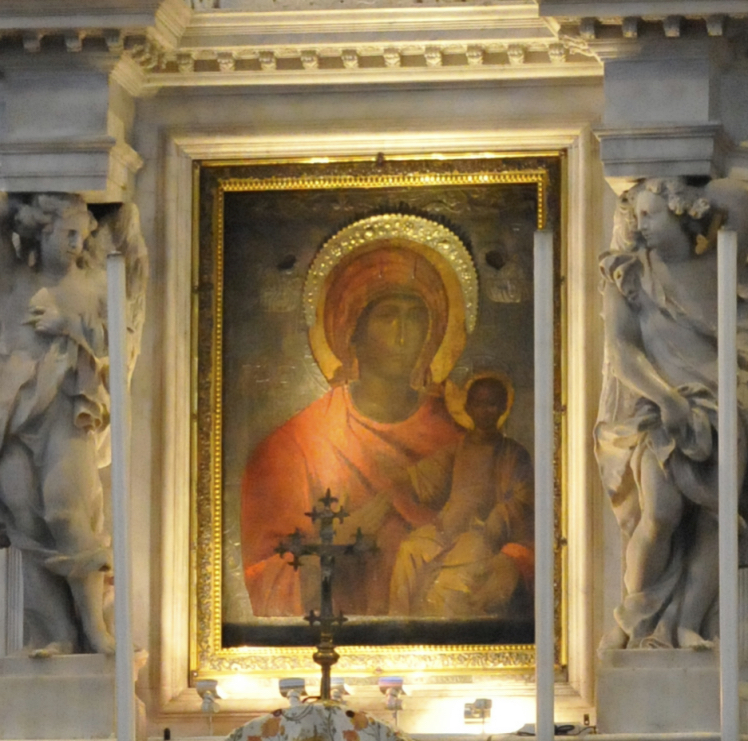
WORKS TO BE SEEN INSIDE THE BASILICA OF HEALTH
If you look at the Basilica della Salute from a boat from St Mark’s, you will notice a minor dome, flanked by two bell towers, at the back, which corresponds to the high altar.
Inside is preserved the Madonna Mesopanditissa (Mediatrix of Peace) who arrived in Venice after the fall of the island of Crete into the hands of the Turks.
It is a precious and very old Byzantine icon that was placed inside an altar designed by Baldassarre Longhena, who inserted an angel with a torch chasing away the Plague, which instead appears as an old witch.
Inside the Basilica are many masterpieces by Venice’s most important artists. The most important of these is Tintoretto’s Wedding at Cana.
The work is a canvas made in 1561 and commissioned for the Refectory of the Convento dei Crociferi. Tintoretto’s work arrived at the Basilica della Salute later, when the Crociferi congregation was dissolved.
Characteristic of Tintoretto’s works is the theatricality and original use of perspective. In this canvas, the composition develops in depth, relegating the figure of Christ with the Virgin beside him to the background and depicting the wedding feast in the foreground.
According to a document dated 1648 and written by Carlo Ridolfi, who saw the work when it was still in its original location, Tintoretto’s perspective created the illusion that the refectory in which it was placed was larger and almost doubled in size.
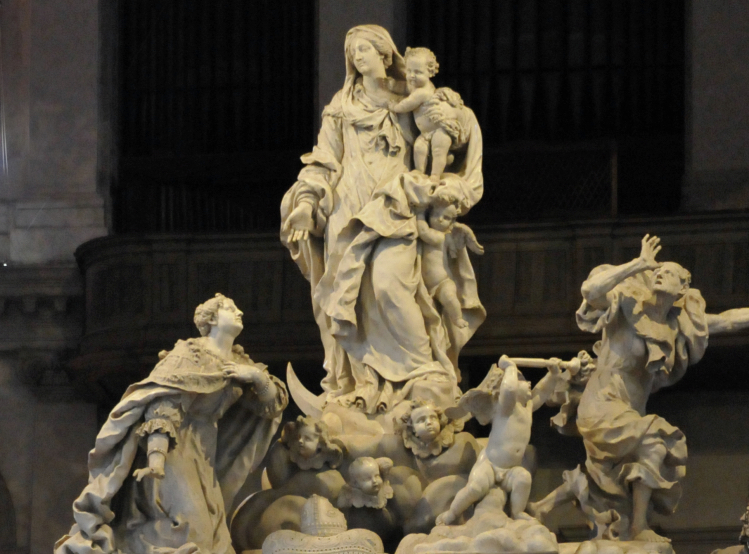
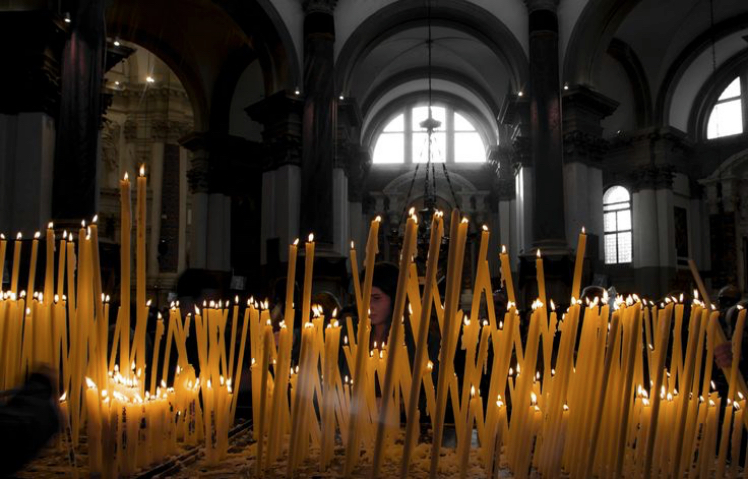
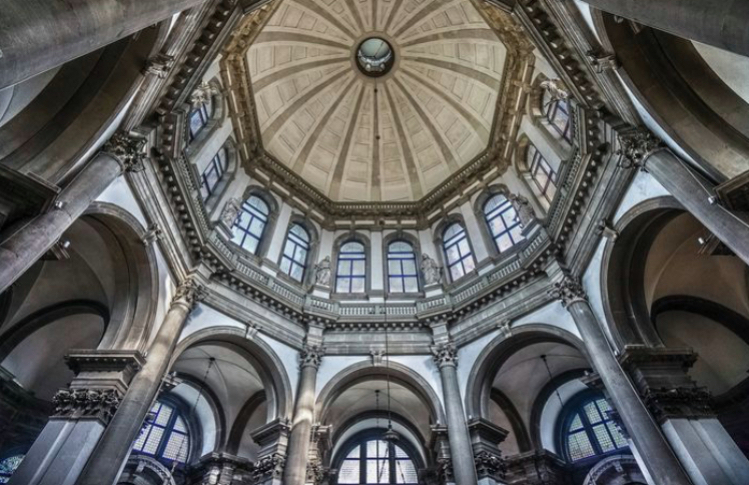
INFO
Basilica di Santa Maria della Salute
Fondamenta Salute
ingresso libero


Eccelente articolo. Una domanda: sulla grande cupola figura Santa Maria della salute. Chi figura sulla piccola cupola?
Grazie in anticipo
C’è solo una cupola.
Eccelente articolo. Sulla grande cupola figura Santa Maria della Salute. Chi figura sulla piccola cupola?